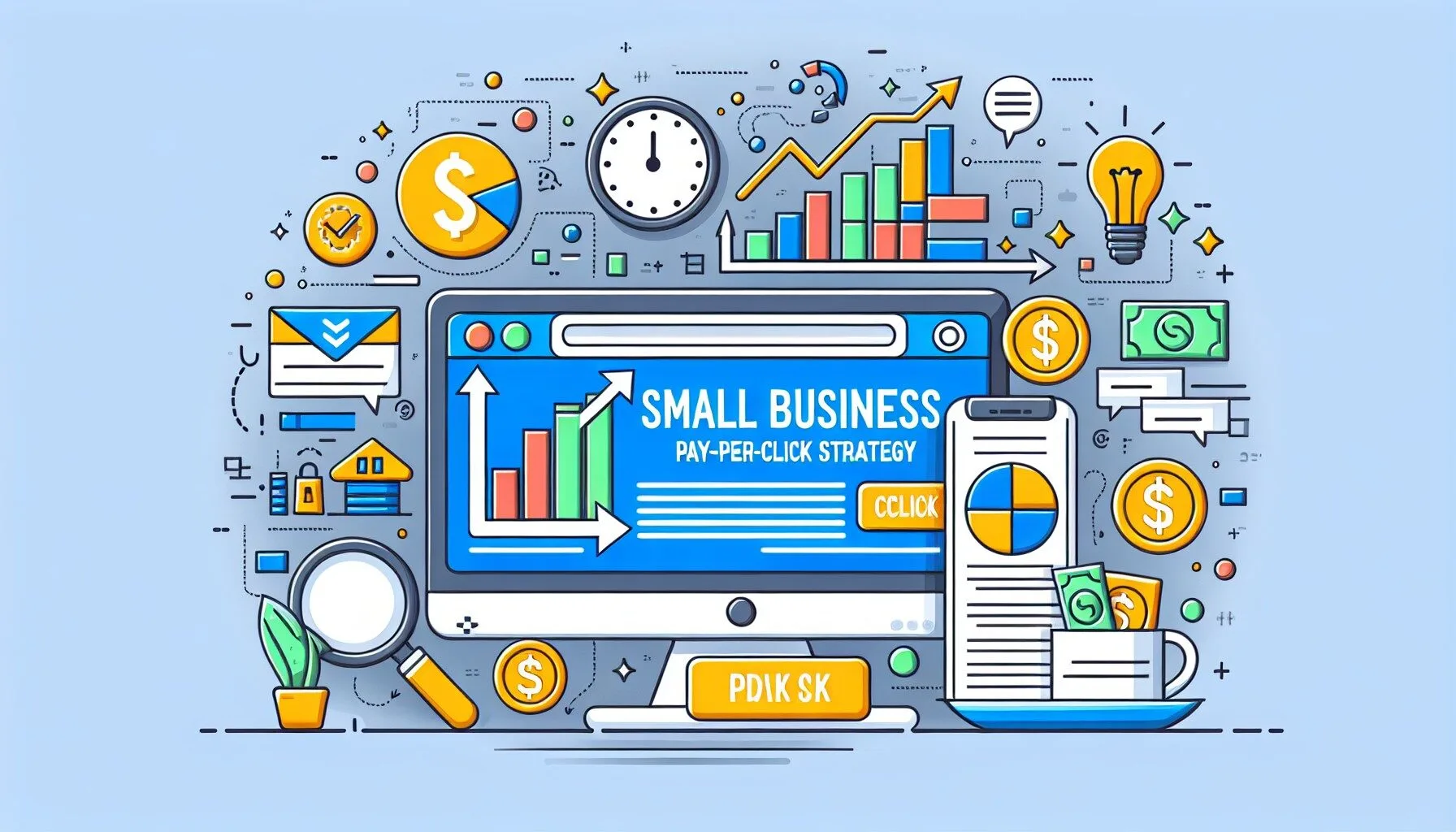If you’re a local business owner who wants consistent revenue growth but isn’t sure where to begin, you’re not alone. One way to take control of your advertising spend is by developing a small business PPC strategy. This type of plan focuses on pay-per-click campaigns that help you appear right where customers are searching, whether on Google, Bing, or social media platforms. Below, you’ll find key steps to get started, along with tips on staying within budget and ensuring you get the most out of every click.
Set your marketing budget
Your budget shapes how much you can invest in PPC campaigns and how quickly you’ll see results. Many small businesses spend around 2% to 5% of their total revenue on marketing, but you may need to adjust that range based on your industry.
- Look at industry benchmarks. According to Deloitte’s February 2022 CMO survey, marketing budgets hover around 11.7% of total budgets for many companies. If you’re a B2B business, you might allocate 2-5% of your revenue, while B2C companies sometimes invest 5-10%.
- Tie your spend to growth targets. Even a modest PPC budget, when used wisely, can bring focused, high-converting traffic.
- Revisit your costs regularly. If you measure solid returns, consider gradually increasing your PPC budget. If results don’t match expectations, keep experimenting or shift those funds to alternative channels.
For additional marketing options that fit small budgets, have a look at our digital marketing strategy for small businesses.
Define your target audience
When you invest in PPC ads, you want the right people seeing them. That means you need to get specific about who’s most likely to buy your product or service.
- Create buyer personas. Think about customers’ demographics (age, location), interests, and challenges. If you sell to a local market, geotargeting can ensure your ads reach the folks who live near your store.
- Leverage your existing data. If you already track purchases or run an email list, analyze that data to see who’s buying most often.
- Customize your campaigns by location. You can run different ads in different areas, which is helpful if you serve customers in more than one region.
Want tips on shaping your overall marketing plan around these insights? Check out our small business marketing strategy resource.
Select effective keywords
Keywords help match your ads to what people search online. The more precise your keywords, the better you can reach ready-to-buy customers.
- Use high-intent terms. Words like “buy,” “near me,” or “consultation” show a clear interest in taking action soon.
- Incorporate long-tail keywords. These can be five words or more, such as “home repair service in Springfield.” They’re more specific and usually less competitive, which means a lower cost per click (CPC).
- Add negative keywords. Prevent wasted clicks by excluding phrases like “jobs” or “free demo” if these don’t match the audience you want.
Even basic keyword adjustments can strengthen your entire campaign. If you’d like more ideas for refining your broader digital presence, you might explore our effective marketing strategies for small businesses.
Write compelling ad copy
Your ad is often the first impression a potential customer has of your business, so make it count.
- Highlight benefits. Spell out how your product or service solves a problem. For example, define how your cleaning service saves time.
- Use social proof. Include short testimonials or success stats if space allows. Prospects love seeing evidence that others trust you.
- Include a clear call to action. “Book now,” “Schedule a consult,” or “Call us today” can give people a nudge to take that next step.
PPC ads that directly answer a searcher’s need will stand out in a crowded marketplace, especially if you make your message quick and easy to grasp.
Optimize your bidding strategy
A great ad won’t do much if your bids are out of sync with your goals. Google Ads, for instance, offers several approaches.
- Cost per Acquisition (CPA). Ideal if you want to pay only when your ad leads to a specific action, such as a form fill or a purchase.
- Cost per Mille (CPM). Good for maximizing visibility by paying per thousand impressions.
- Maximize clicks. Best for driving traffic quickly to your site or a dedicated landing page.
If you’re noticing high costs but low conversions, it may be time to switch tactics. That might include adjusting your max CPC bid or focusing on a narrower set of keywords.
Track and refine your campaigns
Once your ads are live, keep a close eye on the metrics that matter most. Simple tracking efforts can reveal what’s working and where to put your dollars next.
- Monitor impressions, clicks, and conversions. Impressions help you see reach, clicks measure engagement, and conversions reveal actual payoff.
- Watch your quality score. If it’s high (7 to 10 on a 0-10 scale for Google Ads), you’ll likely pay less for clicks.
- Run regular A/B tests. Test headlines, calls to action, and landing pages to see which drives a higher conversion rate.
For extra insights, consider customizing landing page URLs or offering unique discount codes to track performance precisely. Dedicated landing pages have been found to convert around 65% higher than general website pages, so if you haven’t tested that yet, it’s a good next move.
Next steps for growth
PPC can help you jump ahead of competitors and get your offers in front of the right people. By defining a smart strategy, optimizing your ads, and continually testing, you’ll gather the data needed to make confident decisions about your budget. You don’t have to be a marketing giant to see big results.
If you’d like personalized guidance on how to optimize your entire business for consistent revenue growth, you can schedule a free Marketing Strategy Review. It’s a quick way to spot profit leaks, reveal new revenue streams, and map out key growth targets.
PPC is just one piece of the puzzle. Whether you’re refining your small business advertising strategies or exploring a small business social media strategy, consider how all of your marketing tactics can work together. By focusing on the needs of your audience, forming a realistic budget, and paying attention to performance data, you’ll stand out online while staying on track for sustainable growth.




